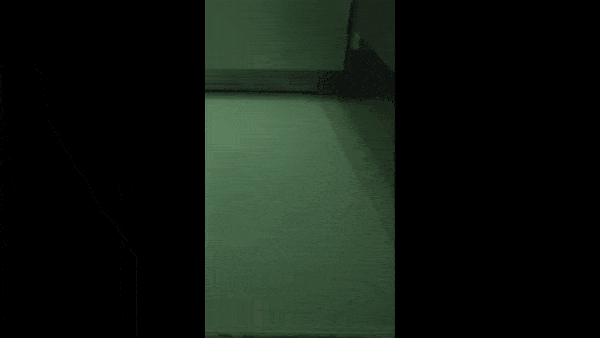Since Hiram Maxim’s first silencer design, suppressor manufacturing has relied on subtractive machining—cutting and shaping solid metal blocks into complex parts. But today, that’s changing fast.
Enter direct metal laser sintering (DMLS)—the same 3D printing process transforming aerospace and automotive manufacturing. And now, it’s redefining the way silencers are made.
Table of Contents:
3D Printed Suppressor Technology Explained
DMLS is an additive manufacturing process that fuses fine metal powder with high-powered lasers, layer by layer, to create a solid monolithic suppressor body.
Unlike traditional methods that remove material, DMLS builds from the ground up—resulting in structures that are lighter, stronger, and more precise than CNC-machined suppressors.
This cutting-edge process allows for complex internal geometries that improve sound suppression, reduce back pressure, and increase gas flow efficiency—features previously impossible to machine conventionally.
Brands like CAT, CGS, Dead Air, HUXWRX, PWS, Sig Sauer, and SureFire. are leading the charge, integrating 3D printing into their suppressor design and production lines.
How a 3D Printed Suppressor Is Made
The process begins with a precise 3D CAD model of the final suppressor.
Then, the DMLS printer spreads ultra-fine metal powder—finer than sand—across a build plate.
A laser then welds each layer, one at a time, until the full suppressor is formed.
Once complete, it’s finished through secondary processes like:
- Threading for quick-detach mounts
- Coating for corrosion resistance
- Wire EDM to true the bore perfectly
Each layer can be as thin as 0.0008 inches, delivering near-perfect tolerances.


Performance and Longevity of 3D Printed Silencers
3D printed suppressors unlock design possibilities that CNC machining simply can’t touch.
Engineers can route gas more efficiently, create advanced flow-through suppressor designs, and maximize internal volume—all in one continuous structure.
Key performance benefits:
- Enhanced sound suppression
- Reduced flash and back pressure
- Exceptional durability from monolithic construction
As Evan Miller, Sig Sauer’s silencer designer, explains:
“DMLS allows us to build silencers without compromises. They can be quiet, strong, light, and expose the shooter to less gas.”
Cleaning and Maintenance
3D printed suppressors feature intricate internal structures that trap carbon and debris more effectively.
That means using the right solvent matters. Products like CAT206 or HUXWRX Suppressor Sauce are specifically formulated for printed metal cans—breaking down carbon deposits without damaging the metal or printed layers.
Cleaning process:
- Soak suppressor in solvent
- Let the solution penetrate
- Rinse or wipe clean
- Re-lubricate as needed
Regular maintenance keeps your suppressor running light, clean, and effective—just the way it’s meant to.
Materials: The Metals That Make It Work
DMLS excels at printing titanium and Inconel, both notoriously difficult to machine traditionally.
- Inconel: Stays strong under extreme heat; ideal for full-auto or high-rate fire.
- Titanium: Lightweight yet durable—perfect for precision shooters or hunters.
- HAYNES282: Incredibly durable under heat, used for jet engines and ballistic missiles.
3D printing allows for 100% Inconel or Haynes construction, something that’s very difficult through CNC machining alone. The result? Cans that can handle serious abuse without extra weight.


Credit: @HUXWRX
Advantages of 3D Printed Suppressors
The 3D printed suppressor isn’t just a new manufacturing method—it’s a leap in performance and reliability.
Top benefits:
- Less ear-ringing port noise and blowback
- Minimal gas-to-face
- Less tuning required for suppressed rifles
- Stronger, lighter, and more consistent builds
- Near-zero tolerance stacking issues
These suppressors deliver better sound, lower pressure, and superior balance—a combination once thought impossible.
The Future of Suppressor Design
3D printing is pushing the limits of silencer innovation.
Engineers can now create internal flow channels, vent paths, and gas routing systems that optimize pressure and cooling like never before.
Manufacturers can also prototype and test rapidly, refining each iteration until they achieve the ideal balance of quiet, strength, and weight.
As Max Miller of HUXWRX puts it:
“Certain superalloys are difficult to machine but can be DMLS printed. That means stronger, lighter suppressors—and we’re just getting started.”
3D Printed Suppressor FAQs
Is it legal to 3D print a suppressor?
Yes—so long as it’s built and registered in compliance with NFA regulations. DMLS suppressors sold by reputable manufacturers are completely legal.
Who makes 3D-printed silencers?
Many of the top brands, such as CAT Suppressors, CGS, Dead Air, HUXWRX, Sig Sauer, SureFire, and PWS, are making 3D-printed silencers.
Can they be repaired?
Yes, 3D-printed suppressors can be repaired by cutting off the damaged section and then welding a new section back to the base. While failures are extremely unlikely on these models, they can be fixed if needed.
Conclusion
DMLS is arguably the biggest leap in suppressor technology in the last hundred years.
This additive process is giving shooters quieter, lighter, tougher cans with almost no compromises.
3D printed suppressors represent the future of firearm sound suppression—and that future is already here.





